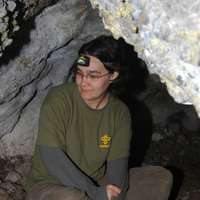
ROSA DOMINGUEZ
Related Authors
Lydia Zapata
University of the Basque Country, Euskal Herriko Unibertsitatea
Miriam Cubas
Universidad de Alcalá
Daniel Albero Santacreu
Universitat de les Illes Balears
Francisco Contreras
University of Granada
Salvador Rovira
Ministerio de Cultura (Spain)
Martina Renzi
University College London
Imanol Pedro
Universidad de Cantabria
Jaume Buxeda i Garrigós
Universitat de Barcelona








Uploads
Papers by ROSA DOMINGUEZ
from six Neolithic sites from the Madrid region has
allowed the identification of a new and time-persisting regional
technological tradition, based on the deliberated addition of crushed bone as temper in most pottery containers. This is the first known case in Iberia, and is outstanding because of its early chronologies and persistence in time: from 5300 to perhaps 3400 cal BC. Samples were characterized by complementary mineralogical and geochemical techniques such as thin-section, conventional and grazing angle X-ray diffraction (XRD), scanning electron microscopy (SEM) and X-ray fluorescence spectrometry (XRF). The addition of bone temper created a light and resistant ceramic material, with technological advantages for both the storage and transportation. Such advantages might be linked to mobile or semi-sedentary groups.
from six Neolithic sites from the Madrid region has
allowed the identification of a new and time-persisting regional
technological tradition, based on the deliberated addition of crushed bone as temper in most pottery containers. This is the first known case in Iberia, and is outstanding because of its early chronologies and persistence in time: from 5300 to perhaps 3400 cal BC. Samples were characterized by complementary mineralogical and geochemical techniques such as thin-section, conventional and grazing angle X-ray diffraction (XRD), scanning electron microscopy (SEM) and X-ray fluorescence spectrometry (XRF). The addition of bone temper created a light and resistant ceramic material, with technological advantages for both the storage and transportation. Such advantages might be linked to mobile or semi-sedentary groups.